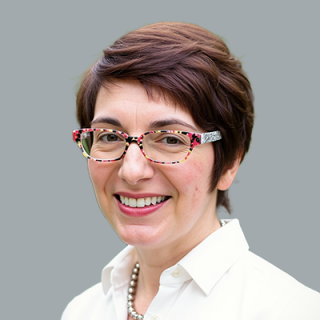Blog
SPAC 4.0: Takeaways from the 2024 SPAC Conference
On June 11 and 12, I had the pleasure of attending and speaking at another SPAC conference organized by DealFlow Events. This annual event has drawn the who’s who in the SPAC world for many years. My goal in attending this conference, aside from seeing all of my SPAC colleagues and friends and meeting new SPAC market participants, is to get a feel for current problems and speed bumps in the SPAC market and to get involved in discussions on how best to approach and solve those problems.
In this article, I share a few of my takeaways from the conference that might be of interest to the SPAC Notebook readers.
Excitement and New Deal Energy
Compared to the somber mood at last year’s conference, when participants really had no sense of whether things would continue to worsen for SPACs or how long the SPAC rut would last, conversations at this year’s event revolved around new deals, new SPACs, and new ideas.

Rumors of multiple new SPAC IPOs just inches away from pulling the trigger were the subject of many discussions. Many SPAC advisors referred to a long pipeline of deals. The uncertainty was around whether all the deals in the pipeline would attempt to hit the market in the next month or whether IPO activity was going to spread out over the next several months.
Most attendees were of the opinion that 95% of new SPAC IPOs will be driven by experienced SPAC teams. And the latest filings and IPOs confirm that thought, with third-, sixth-, and ninth-time SPAC issuers making the list in the last few weeks. There were also several teams at the conference who were representing operating companies and looking for potential suitable SPAC matches. However, some of these teams seemed to be very early on in their process.
New Structures and Terms
Higher Interest Rates to Fund Underwriting Fees
In their goal to make the SPAC vehicle more palatable to investors and sponsors, SPAC advisors (e.g., attorneys, bankers, etc.) talked about implementing a few tweaks to the SPAC structure. These included taking advantage of higher interest rates on trust assets to cover not only operating expenses during the SPAC’s search period but to fund bank underwriting fees as well. Many talked about more flexible or competitive underwriting fees compared to previous years and bankers who are now willing to waive or substantially discount back-end fees. From a D&O insurance perspective, having funds generated through interest that is earmarked for SPAC operating expenses, including the expense of a D&O insurance policy, is a welcome development.
Anchor Investors Making a Comeback
Anchor investors and non-managing sponsor investors offering indications for up to 90%+ of the IPO raise seemed to be the new way of getting around the problem of significant redemptions and excessive erosion of trust funds. Again, from a D&O insurance perspective, having investors offer even non-binding commitments that will reduce the likelihood of the trust being wiped out by redemptions and deal negotiations collapsing, is a better outcome and translates into a better, more insurable risk profile.
Three-Year SPAC Investment Period?
There was talk about extending the SPAC investment period to three years vs. the typical two-year period to accommodate the cumbersome regulatory clearance process. NASDAQ already allows for the three-year period and NYSE is in the process of obtaining regulatory approval to do so. It is not clear, however, how many SPACs will initially aim for a three-year search period. According to SPACInsider, 74% of currently active SPACs (searching and announced) are older than 24 months, 45% are older than 30 months, and it is taking on average 31.7 months for a SPAC to get from IPO to closing a deal. Most SPACs that recently filed their S-1s, however, have listed the traditional two-year period in their documents. From the D&O insurance perspective, getting a three-year policy will likely be problematic.
Cayman Is the Place to Be
According to advisors, new SPACs were all aiming to incorporate in the Cayman Islands versus Delaware. This change is driven by the Delaware Courts’ hostile treatment of SPACs over the last two years and by the 1% excise tax on redemptions. From the D&O insurance underwriter perspective, a Cayman-organized SPAC at this point is a less-risky proposition than a Delaware-organized SPAC. Less risk, not surprisingly, results in better terms and pricing for D&O insurance coverage.
Interesting Lawsuits Affecting the SPAC Market
Delaware: Hennessy/Canoo
A case of much interest to the attorneys in attendance was the May 31, 2024, Delaware Court of Chancery decision, which dismissed an action asserting claims of breach of fiduciary duty, unjust enrichment, and aiding and abetting against Hennessy Capital Acquisition Corp. IV, a SPAC, its sponsor, Hennessy Capital Partners IV LLC and the SPAC’s chairman and chief executive officer. This decision was the first of its kind in Delaware, which is why everyone was interested in it. The case stems from the SPAC’s December 21, 2020 merger with Canoo Holdings Ltd. The plaintiff took issue with the pre-merger disclosure in the SPAC’s proxy statement.
In the decision, the Chancery Court referred extensively to its 2022 decision in Multiplan, in which it applied the entire fairness standard rather than the more lenient business judgment rule and ultimately decided against the SPAC parties. But it seems that all had not gone well in Delaware since Multiplan. Vice Chancellor Lori W. Will lamented that “[t]he success of a few cases,” referring to Multiplan and its progeny, “begat a host of others.” Though the SPAC market is now a shadow of its former self, SPAC cases in Delaware have not subsided. Chancellor Will referred to the complaints being brought in Delaware as being “[r]emarkably similar.” Many of them accused “SPAC directors of breaching their fiduciary duties based on flaws in years-old proxy statements that became problematic only when the combined company underperformed.”
It is no surprise to most SPAC teams and their attorneys that the heavy toll many of the defendants in these copycat cases had to carry in defending or settling them is now causing most new SPACs to reconsider incorporating in Delaware. In dismissing the Hennessy/Canoo action with prejudice, the Chancery Court is trying to stem the flow of frivolous and costly litigation, which it says will “fuel perverse incentives and invite strike suits.” In my observation, however, that ship has already sailed. The SPAC market has already adjusted and moved out of Delaware into friendlier and less costly jurisdictions like the Cayman Islands.
Texas: The Financial Strategies Case
In May, a Texas Bankruptcy Court held against the plaintiff (Financial Strategies Acquisition Corp.), a SPAC which “intended to use its bankruptcy to circumvent the trust agreement and pay creditors… using the funds from the trust account at the expense of its investors.” As most SPAC market participants know, the trust principal—and, in most cases, the interest that accumulates on that principal—must be distributed to the SPAC’s investors if the SPAC fails to consummate a business combination.
In this case, the SPAC went into bankruptcy and then tried to break the sanctity of the trust to benefit its creditors rather than distributing the trust’s assets to its investors. Kirkland & Ellis (K&E) offered a nice write-up of this case when it wrote that “[b]ased on the terms of the trust agreement, the Court denied Financial Strategies’ motion to compel and held that Financial Strategies had (a) no interest in the principal of the trust account and (b) a limited interest in the interest on the principal, solely to the extent provided in the trust agreement.” Essentially, the court ruled that it is the trust agreement that dictates the rights of various parties to the trust’s assets and that debtors, based on trust documents, do not have rights to those assets. Per K&E, this case is of first impression and “establishes a precedent that SPACs cannot use bankruptcy to invade SPAC trust accounts and deprive their investors of their investments.”
Both of these cases are a positive development as far as SPAC-related risk is concerned.
Outlook for 2024 and Beyond
Considering the uncertainty and the anemic activity that dogged the SPAC community over the last two years, hearing a positive buzz in the conversations at the conference was refreshing. I am certain that no updates to SPAC processes will come without their challenges and that we are likely to see other novel theories of litigation directed at SPACs in the future. This year, however, the SPAC community looked ready and able to dive into all these new challenges and excited to make SPAC 4.0 a success.
Author
Table of Contents









